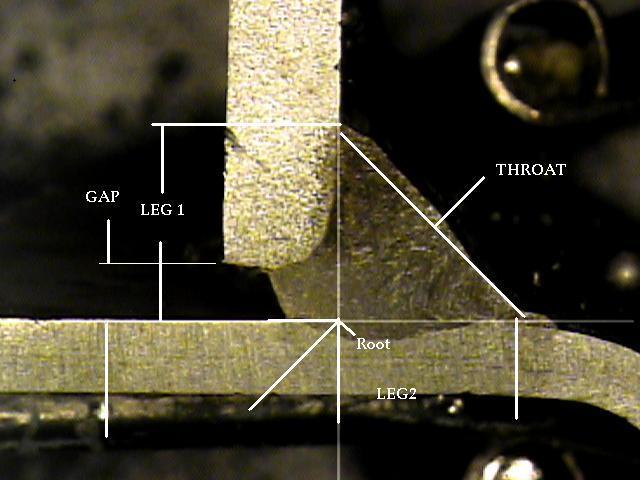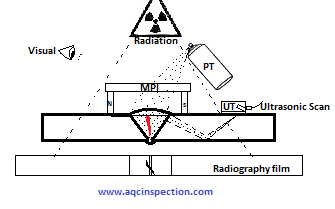Crucial Tips for Effective Welding Inspection Madison Services
Wiki Article
Exploring Advanced Tools and Methods for Accurate Welding Inspection
In the realm of welding examination, the quest of accuracy and dependability is vital, spurring the development of innovative devices and techniques. Technologies such as phased array ultrasonic testing and electronic radiography are transforming defect detection, using unrivaled precision in defining welding imperfections. Moreover, laser scanning developments and automatic examination systems, outfitted with expert system, are redefining the landscape by reducing human mistake and boosting safety and security measures. As these innovative techniques proceed to advance, they guarantee not just to change inspection practices yet also to elevate intriguing concerns about the future of quality guarantee in industrial applications.Ultrasonic Examining Advancements
Ultrasonic testing technologies often stand for the forefront of improvements in welding evaluation modern technologies. These advancements have actually significantly improved the capacity to find and review stoppages within welded structures, making certain improved stability and safety and security.
Additionally, improvements in software application algorithms for information evaluation have boosted the precision of flaw detection and sizing. Automated ultrasonic testing systems now supply high-resolution imaging, allowing thorough evaluations of weld top quality. These systems are typically incorporated with innovative visualization tools, which assist in the analysis of outcomes.
Radiographic Examination Methods
While ultrasonic testing advancements have actually set a high standard in non-destructive assessment, radiographic examination strategies remain to play an integral role in welding evaluation by using one-of-a-kind understandings right into material stability. Radiographic testing (RT) utilizes using X-rays or gamma rays to penetrate materials, creating a radiograph that aesthetically stands for the inner structure of a weld. This imaging capability is very useful for detecting subsurface problems such as porosity, incorporations, and fractures that may not be noticeable with surface assessments.The procedure entails positioning a radiation resource on one side of the weld and a detector on the contrary side. Variants in material density and thickness influence the depletion of the rays, creating a different photo that exactly defines problems. RT is especially helpful for examining thick sections and complex geometries where various other techniques might fall brief.
Regardless of its performance, radiographic examination must be conducted with rigorous adherence to security protocols as a result of the harmful nature of ionizing radiation. Additionally, the analysis of radiographs needs proficient workers, as the high quality of the analysis straight influences the dependability of the inspection. Ongoing innovations in digital radiography are improving photo clearness and analysis performance, reinforcing RT's essential role in making sure weld top quality.
Laser Scanning Advances
Accepting laser scanning innovation in welding inspection has revolutionized the analysis of weld top quality and stability. Unlike standard evaluation methods, laser scanning offers rapid information procurement, dramatically improving the performance and accuracy of weld examinations.Laser scanning advances have brought about considerable improvements in finding and characterizing surface problems such as porosity, absence of blend, and undercuts. The high-resolution information enables inspectors to perform detailed analyses, making certain that welds satisfy stringent market requirements. This technique supports the growth of electronic records, promoting long-lasting top quality guarantee and traceability.
In addition, laser scanning technology integrates flawlessly with software application solutions developed for automated flaw detection and evaluation. The resultant information can be conveniently shared and evaluated, advertising collective decision-making processes. As markets remain to require greater criteria for weld quality, laser scanning stays at the leading edge, providing exceptional accuracy and efficiency in welding examination.
Automated Evaluation Equipments

Automated inspection systems use the benefit of consistency, eliminating human error and subjectivity from the examination process. They are developed to run in various atmospheres, from production floors to remote area sites, making sure detailed protection. Welding Inspection Madison. These systems can be set to abide by details welding criteria and requirements, offering thorough records and paperwork for quality assurance objectives
Moreover, the integration of cloud-based systems facilitates the storage space and analysis of large quantities of evaluation information. This allows trend analysis and predictive maintenance, permitting producers to deal with possible problems before they escalate. The adoption of automatic evaluation systems is an essential move towards boosting the integrity and effectiveness of welding processes in industrial applications.

Enhancing Safety and Effectiveness
A substantial aspect of enhancing safety and efficiency in welding inspection depends on the assimilation of cutting-edge innovations that improve operations and mitigate threats. The fostering of advanced non-destructive testing (NDT) approaches, such as ultrasonic screening, phased variety ultrasonic screening (PAUT), and radiographic testing, plays a critical role in making sure architectural honesty without visit this site right here compromising the security of the workers entailed. These methods enable thorough evaluations with marginal downtime, reducing prospective dangers connected with typical methods.In addition, the application of real-time data analytics and artificial intelligence formulas has actually transformed the method examination data is analyzed. By employing anticipating analytics, potential issues can be identified prior to they show up into critical failings, ensuring timely treatments and maintenance. This positive technique significantly enhances operational efficiency and safety in welding processes.
In addition, remote inspection modern technologies, including drones and robotic crawlers equipped with high-resolution electronic cameras, allow examiners to evaluate hard-to-reach locations without subjecting them to unsafe conditions. This not only improves inspection accuracy but likewise reduces human risk. By leveraging these innovative devices and approaches, markets can achieve greater safety criteria and operational performance, ultimately bring about more sustainable and reliable welding inspection techniques.
Verdict
The assimilation of advanced devices and approaches in welding examination substantially enhances issue discovery and ensures structural honesty. Welding Inspection Madison. Technologies such as phased variety ultrasonic screening, digital radiography, and laser scanning boost flaw characterization, while automated inspection systems and AI visit this site right here minimize human mistake. Remote innovations facilitate risk-free analyses in hazardous settings, advertising an aggressive upkeep approach. These improvements not only boost evaluation effectiveness yet likewise contribute to enhanced safety and security and quality assurance in industrial welding applications.
Ultrasonic testing this contact form innovations regularly stand for the leading edge of innovations in welding examination modern technologies.While ultrasonic screening developments have set a high requirement in non-destructive evaluation, radiographic inspection techniques continue to play an important role in welding examination by using unique understandings into product integrity.Welcoming laser scanning innovation in welding inspection has actually changed the evaluation of weld quality and stability. As markets continue to require higher requirements for weld high quality, laser scanning remains at the center, providing unparalleled precision and performance in welding evaluation.
Automated examination systems supply the benefit of uniformity, eliminating human error and subjectivity from the evaluation process.
Report this wiki page